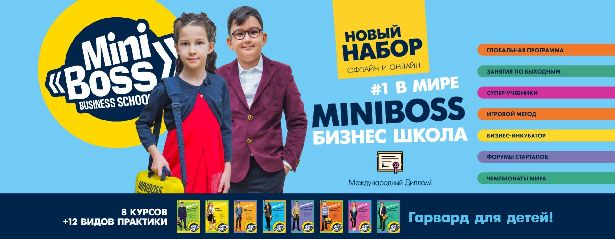
Nike does count itself amongst the world’s most famous brands. The iconic "swoosh" logo, coupled with innovations in shoe technology as well as a creative marketing and branding strategy keep the image of the company in high regards up to this day.
"Shoe Dog" tells the story of the company’s origins, told by none other than Phil "Buck" Knight, its founder. The book starts in the 1960s when Knight decides to travel the world at the age of 24. He has, what he calls "a crazy idea" — importing Japanese running shoes into the US. Not only is Knight a running enthusiast himself, he did develop this idea as part of his MBA program in Stanford.
After a successful start of business relations with the Japanese supplier Onitsuka (today part of Asics), Knight begins to sell designs by his own company. This strains the relationship to their suppliers and eventually leads to a separation. The company grows despite numerous setbacks and problems.
The memoir ends with the initial public offering in 1980, then adds some thoughts from present-day Knight.
It is an interesting journey, full of struggle and problems, but also full of hope and victories. Knight distributes small morsels of wisdom throughout the chapters. I’d like to show you what you can learn from him and his memoir.
Lesson 1: It takes time to build
The book starts in 1962 when Knight first borrows some money to import shoes from Japan. He tries to peddle them to sports stores, but they already have enough on their shelves. He then starts by going to local track meetings (important in the next lesson). But it all takes time. Two years after his trip, he formally starts the company together with his old track coach, Bill Bowerman. Another three years later, the company needs to rent an office for the first time, and they only get a small room next to a bar. They grow consistently, but they are still a small company, a handful of people scattered all over the US. And only in 1972, the brand gets more widespread recognition, a full decade after Knight started out.
Sure, the 1960s were a slower time. There was no internet, globalization had barely started with China still being behind walls and the iron curtain firmly dividing the world.
Building a stable company that sells physical goods takes time. Not only for sales but especially for innovation, development and building trust.
As Knight tells it, there was no need for a quick win, the company not a way to get rich and then retire early. He is pushing growth and does take huge risks to make it happen. Yet, I got the impression that he did this not to be rich, but because of his "crazy idea": maybe the things that are in the market are not the end of the line. Maybe someone can develop something better, not only to sell more but to support others. And that took time.
Sure, the 1960s were a slower time. There was no internet, globalization had barely started with China still being behind walls and the iron curtain firmly dividing the world.
Building a stable company that sells physical goods takes time. Not only for sales but especially for innovation, development and building trust.
As Knight tells it, there was no need for a quick win, the company not a way to get rich and then retire early. He is pushing growth and does take huge risks to make it happen. Yet, I got the impression that he did this not to be rich, but because of his "crazy idea": maybe the things that are in the market are not the end of the line. Maybe someone can develop something better, not only to sell more but to support others. And that took time.
Lesson 2: Be enthusiastic and talk to the enthusiasts
Knight himself has been a runner all his life, he was part of the scene and knew coaches, runners, and their teams. It seemed to be a short, but steep way for some of his acquaintances from running in colleges to starting at the Olympics — the company’s co-founder Bowerman was team coach in 1968 and 1972. Knight drove to track competitions and meetings and schools and talked to the enthusiasts. It was not unheard of that coaches build or improved their runner’s shoes at home, and Knight with his new shoe company was right next to them, finding out about their problems. Today, we would call it user research, but it came more naturally to Knight: go to the people that care and know. Talk to them and learn from them. Jeff Johnson, the first employee, not only sets up a store but creates an experience for runners;
It also allowed them to be nearer to innovation: in the late 60s, the running tracks/ turfs went from being ash or dirt to a new synthetic material: tartan or rubber. New turf meant new physical properties in terms of grip, dampening etc. Because Nike (in this case Bowerman) were right there when the new surfaces were tested, they could respond quickly by developing a new shoe and sole fitting for this surface.
The important lesson here is one of enthusiasm and authenticity. It one of building trust by being trustworthy: here is the guy who is a runner, a fan, and he also happens to have a company that takes this sport seriously. A company that tries to improve upon the situation, for everyone, by focusing on the humans and not on the numbers.
The important lesson here is one of enthusiasm and authenticity. It one of building trust by being trustworthy: here is the guy who is a runner, a fan, and he also happens to have a company that takes this sport seriously. A company that tries to improve upon the situation, for everyone, by focusing on the humans and not on the numbers.
Lesson 3: Being a manager vs being a leader
Incidentally, a portion of Nike core team was the opposite of sporty: one was bound to a wheelchair after an accident, two were morbidly overweight, some of them smoked 2 packs a day. Knight defies some modern views on management. He rarely responds to questions, letters or other correspondence. He doesn’t seem to be a "manager", but more of a leader.
The work they do is full of purpose — sometimes driven by spite and old grudges, but the first handful of people are looking for something outside of 9-to-5 workday in law firms or accounting offices.
Knight often quotes General McArthur:
"Don’t tell people how to do things, tell them what to do and let them surprise you with their results."
And later on, he admits that
"My management style wouldn’t have worked for people who wanted to be guided, every step, but this group found it liberating, empowering."
They are all dedicated to the purpose: making running better and find ways to contribute. Plus, they all share into important decisions, taking regular team retreats to work on bigger questions.
Knight doesn’t manage them, he enables them.
The work they do is full of purpose — sometimes driven by spite and old grudges, but the first handful of people are looking for something outside of 9-to-5 workday in law firms or accounting offices.
Knight often quotes General McArthur:
"Don’t tell people how to do things, tell them what to do and let them surprise you with their results."
And later on, he admits that
"My management style wouldn’t have worked for people who wanted to be guided, every step, but this group found it liberating, empowering."
They are all dedicated to the purpose: making running better and find ways to contribute. Plus, they all share into important decisions, taking regular team retreats to work on bigger questions.
Knight doesn’t manage them, he enables them.

Lesson 4: They didn’t know where they were going
It’s always easy to tell a story after it happened. It is a great fallacy of our minds: because we know it happened, it was the only way it could have happened. Knight doesn’t set out to build an empire, nor does he want to disrupt or overturn the shoe markets.
He wants to make running better by improving the tools (shoes) and runner’s health. He struggles, he fights, and in the end, even after cracking $140 million in sales, he says
"But instead of cherishing how far we’d come, I saw only how far we had to go."
He admits to being an absent father, narrowly avoiding burnout, making rash and bad decisions. Surely, the company thrived and survived, but there was luck involved: it could have gone differently, but then today we wouldn’t be reading this story.
For entrepreneurs, the lesson should be this: focus on doing proper work today and on the things that you can control. Take chances and be bold. Listen and appreciate what everyone is doing. Don’t try to predict the future.
"Shoe Dog" is a remarkable book: by telling the story of the company, it never assumes the authority of "this is how you must do it". It highlights the individuality of each company’s way and how much it depends on circumstance and luck, but also how much it can grow with the right people and their dedication.
Thanks for reading!
He wants to make running better by improving the tools (shoes) and runner’s health. He struggles, he fights, and in the end, even after cracking $140 million in sales, he says
"But instead of cherishing how far we’d come, I saw only how far we had to go."
He admits to being an absent father, narrowly avoiding burnout, making rash and bad decisions. Surely, the company thrived and survived, but there was luck involved: it could have gone differently, but then today we wouldn’t be reading this story.
For entrepreneurs, the lesson should be this: focus on doing proper work today and on the things that you can control. Take chances and be bold. Listen and appreciate what everyone is doing. Don’t try to predict the future.
"Shoe Dog" is a remarkable book: by telling the story of the company, it never assumes the authority of "this is how you must do it". It highlights the individuality of each company’s way and how much it depends on circumstance and luck, but also how much it can grow with the right people and their dedication.
Thanks for reading!




